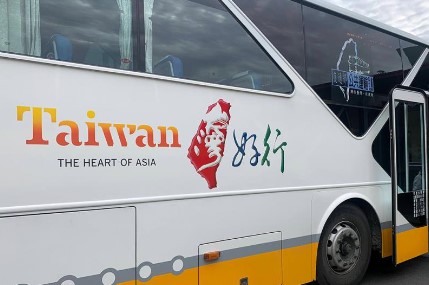
The Taiwan Tourism Administration, in collaboration with Netflix's popular food series "Somebody Feed Phil," secretly invited food explorer Phil Rosenthal to Taiwan last May. A professional film crew documented his culinary journey across Taiwan. The official channel of "Somebody Feed Phil" has announced the global premiere of its seventh season in March of this year, featuring a spectacular Taiwan special!
Taiwanese Culinary Extravaganza Draws Celebrities Together
Renowned food explorer Phil Rosenthal will take viewers on a journey through northern Taiwan, from the bustling night markets of Taipei City to the mountain town of Jiufen. The program will feature appearances by various celebrities, including Golden Bell Award-winning host Janet from TLC Channel Travel Show "Fun Taiwan," Basketball Star Dwight Howard, and comedian Brian Tseng. Joining Phil's eating are companions Ivy Chen, creator of and instructor at Ivy's Kitchen-a space dedicated to Taiwan’s culinary traditions; Charlene Yang, founder of Taipei Eater, and Melvin Mar, renowned Hollywood producer. Together, they will indulge in Michelin-starred restaurants and a variety of street food delights.
Experience Diverse Cuisines and Taiwanese Culture
In typical warm and hospitable Taiwanese manner, the host friends guide Phil through an exploration of classic Taiwanese cuisine, leaving no stone unturned. From Michelin-starred restaurants and tea houses in Jiufen to the fruit ice stalls in Ximending, and the bustling night markets of Keelung and Huaxi Street, Phil’s amazed by the accessible deliciousness of Taiwanese cuisine will be at center stage. Along the way, Phil also marvels at local culture, visiting landmarks like Liberty Square and Dadaocheng Cisheng Temple, and even experiencing Taiwanese traditional knife therapy. The program concludes with a magnificent feast shared with friends at the Michelin-starred restaurant Mountain and Sea House.
Taiwan's Culinary Charms Echo Globally, Phil Praises Taiwan's Friendly Culture
Phil immerses himself in Taiwan's street food culture and experiences the exuberating warmth and friendliness of the Taiwanese people, leaving him with an exceptionally positive taste of Taiwan. While Taiwan may not be the most popular tourist destination for Europeans and Americans, those who do visit Taiwan are deeply touched by its charming food culture and hospitality.
Stay Tuned for the Culinary Journey Ahead!
The seventh season of "Somebody Feed Phil" premieres globally on March 1. Let's roll up our sleeves and get ready to dig in on the exciting chapter of this Taiwanese culinary adventure together!
About "Somebody Feed Phil "
Recipient of the James Beard Award in the food category and nominated for the Critics' Choice Real TV Award for Best Travel Show Host multiple times, along with several Primetime Emmy Awards nominations and wins, "Somebody Feed Phil" is Netflix's top-ranked food travel series, watched by over a million viewers weekly and over 30 million viewers worldwide.
The 2024 Tourism Festival Awards Ceremony is taking place today, February 22, 2024, in the Grand Ballroom of the Grand Hotel Taipei, in appreciation and recognition for the commendable efforts of groups and individuals within the domestic and international tourism industry. Their accomplishments stand out as they contribute to the revitalization and vibrancy of Taiwan's tourism, all amidst the challenges posed by the global post-pandemic landscape.
Following the highly anticipated restructuring of the Tourism Bureau into the Tourism Administration (TTA), the core mission values of "Communication, Collaboration, Innovation, and Navigation" are now aligned with the dual objectives of "Sustainable and Digital Transformation." This strategic approach aims to gather diverse perspectives, foster collaborations across agencies, and tap into international tourism markets. The overarching goal is to revive Taiwan's international tourism to pre-pandemic levels. With 6.48 million tourists visiting Taiwan in 2023, with top origins being Hong Kong, Japan, and Korea, the outlook for Taiwan's international tourism recovery appears optimistic.
This year's Tourism Festival, for the first time in the last three years, matches the scale of its pre-pandemic celebration. Notably, it marks the inaugural international celebratory event since the reorganization of the TTA, reflecting in the overwhelming congratulations from attendees, both domestic and overseas. Vice Premier of the Executive Yuan Wen-Tsan Cheng and Minister of MOTC, Mr. Kwo-Tsai Wang, attending the event underline the Taiwanese Government's strong commitment to supporting Taiwan's tourism. Vice Premier Cheng emphasized that 2023 was a pivotal moment, showcasing the collective resilience in overcoming pandemic challenges and witnessing the positive outcome of Taiwan's tourism recovery. Acknowledging the industry's hard work, there's an expressed expectation for MOTC to sustain and elevate this recovery to new heights. Minister Wang highlighted the global perspective implemented post-TTA reorganization, emphasizing initiatives like the "Accelerated and Expanded Inbound Tourism Promotion Program" to attract international tourists. The establishment of TTA offices in Busan, Mumbai, and Jakarta demonstrates an intensified international marketing approach, focusing on key tourism events and spotlight awards, promoting sustainable tourism with the core theme "Enjoy mountains, Enjoy sea, Enjoy island adventures." The collaborative effort aims to position Taiwan prominently on the world stage.
This year's Award for Special Contribution to Taiwan Tourism is presented to Mr. HARADA KAZUYUKI, Chairperson of Keikyu Corporation. Keikyu Corporation, having established a Treaty of Amity and Cooperation with Taiwan Railways Administration (currently known as Taiwan Railway Corporation), played a crucial role in fostering collaboration. Mr. Harada's significant contribution includes providing long-term advertising spaces within Keikyu railway stations for Taiwan tourism marketing. Additionally, his efforts in facilitating a visit by Keikyu Group Promotion Association of Keikyu Corporation aimed at promoting exchanges between Taiwan and Japan's tourism industries are noteworthy. Mr. Harada is recognized for his profound contribution to enhancing Taiwan's tourism.
In recognition of the first anniversary of TTA's reorganization, the Outstanding Tourism & Professional Award has been upgraded to the "Taiwan Tourism Golden Award," the highest honor in Taiwan's tourism industry. Additionally, four awards, including the "Award for Contribution to Taiwan Tourism," "Outstanding Theme Park Award," "Outstanding Hotel & Homestay Management Award (Local Government)," and "Outstanding Government Employee Award," continue to be part of the honors. The "Friend of Taiwan Tourism Award" will be presented following the pre-pandemic tradition, acknowledging the distinguished contributions of various tourism industry partners.
TTA pointed out that this year's ceremony embodies the tourism visions of "Care for Our Land. Let Taiwan Shine," celebrated through performances in Mandarin, Taiwanese, Hakka, and Taiwan's Indigenous People's Languages. It serves as a showcase of Taiwan's diverse local culture. The centerpiece of Taiwan's tourism, "Enjoy Mountains, Enjoy Sea, Enjoy Island Adventures," is emphasized, with a stage crafted without printed materials to align with TTA's "Sustainable & Digital Transformation" initiative. This initiative symbolizes the synergy between Taiwan's unique natural resources and the energy of international tourism, contributing to the sustainable future of Taiwan's tourism industry.
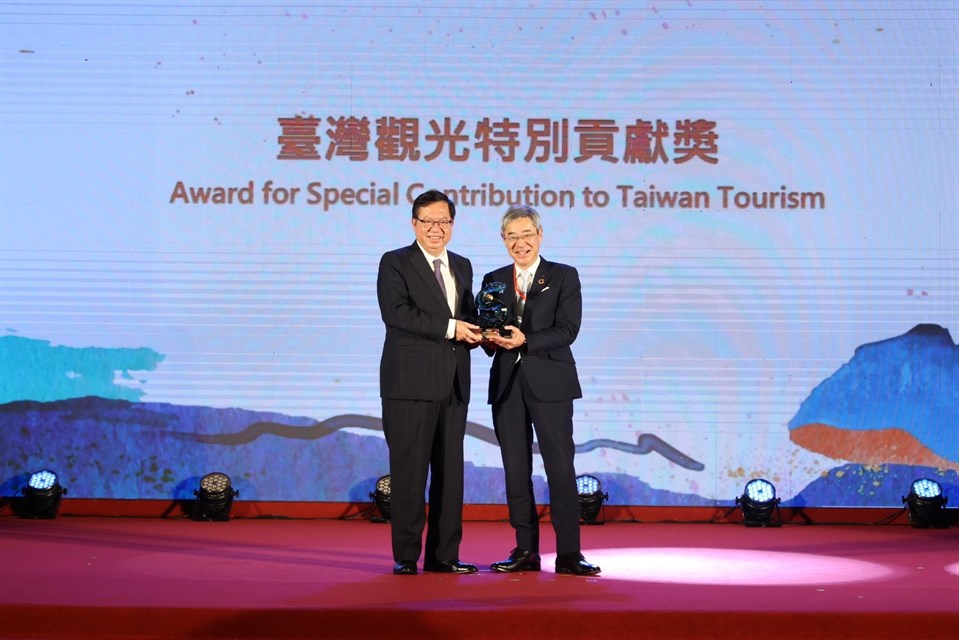
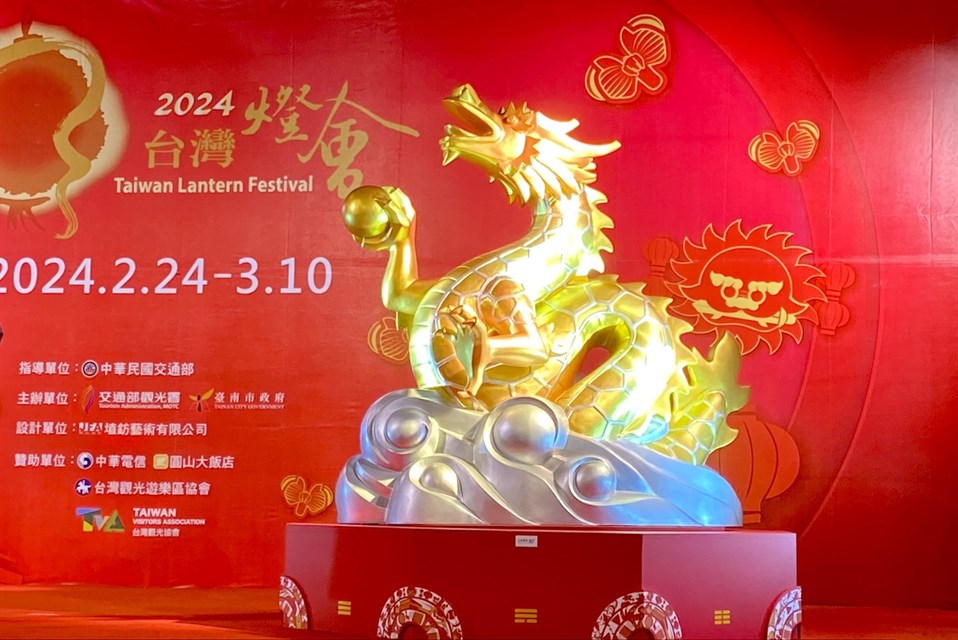
The 2024 Taiwan Lantern Festival will light up Tainan from February 24th to March 10th. Two areas will display lanterns, the "High Speed Rail Lantern Area" and the "Anping Lantern Area." The Tourism Administration of the Ministry of Transportation and Communications (MOTC) unveiled the main lantern today. Its theme is one of mystery: "The Dragon Comes to Taiwan."
MOTC Minister Wang Kwo-tsai noted that the Taiwan Lantern Festival returns to Tainan for the first time in 16 years. The festival will allow visitors to see Tainan’s continued development. The city is justly famous for its history, including being Taiwan’s ancient capital. But Tainan is much more than a historic city. These days it is a modern city, and it is positioned for a promising future. For example, it is a leader in the field of green energy. Tainan provides a supportive environment for innovative industries and technological growth. Cultural diversity is also a strength of Tainan, a city where tradition and modernity coexist in harmony. The 2024 Taiwan Lantern Festival will allow the world to experience Tainan, an ancient capital that pairs its deep cultural heritage with leadership in technological innovation.
The Director-General of the MOTC’s Tourism Administration, Chou Yong-hui, noted that this year’s main lantern will not only rotate on a platform, but also will be able to move its forearms. This adds a new and interesting technical dimension. Also, this year’s the main lantern is environmentally friendly, using solar energy to help power its movements. Energy-saving is a theme for this year’s festival, making it not only entertaining but also educational. The festival sends a warm welcome to everyone to come to Tainan this year to stroll with friends and family and enjoy the lanterns of Taiwan.
Every year, the children of Taiwan wait in high anticipation for the “little lantern.” The theme of this lantern this year is the dragon, a prominent animal in the Chinese zodiac. For this year’s lantern, the dragon is transformed into a "little dragon bag" that can be worn on the body. The dragon’s head can be added to lightweight belongings or toys. The dragon’s body can be turned into a long dragon bag. A strap is included that can be worn around the neck or across a shoulder. It makes for a great fashion accessory. Another fun part of the design is a coin-sized hole at the top of the lantern. When this is opened, objects such as coins and small toys can be dropped into the lantern, creating a clatter as they fall. Thus, not only is the little dragon a lantern, it’s also a collection box; all great fun for the children!
The 2024 Taiwan Lantern Festival will open with the switching on of the first lantern on February 24th (Saturday). The main lantern will put on a light show every 30 minutes. The lantern festival will continue through the evening of March 10th (Sunday). The Tourism Administration warmly invites people from around the world to visit Tainan and participate in this grand event. Celebrate with the people of Taiwan the enchantment and colors of the Lantern Festival!
As the world’s population gradually ages, the Tourism Administration, MOTC, is optimistic about the potential for senior citizen tourism. Following the launch of its "Golden Years" tourism brand last year, the Administration is planning to introduce a "Golden Years" certification system in 2024 to help travel agencies create high-quality tour packages that will allow people of all ages to travel together and learn from each other. Five key elements of the program are food, accommodations, sightseeing, shopping, and transportation. The Administration has invited senior artists and internet celebrities to shoot promotional videos and participate in demonstration itineraries. These will help introduce the charms of Golden Years tours that will provide senior travelers with a variety of options that will allow them to enjoy the very best that Taiwan has to offer.
The new Golden Years brand offers itineraries designed to meet the needs of senior citizens. The tours provide age-appropriate travel, allowing seniors to make friends and share beautiful moments on their journeys, as well as enjoy the wonderful scenery of Taiwan. Seniors from near and far are warmly welcomed to visit Taiwan with their families and friends.
At a morning press conference, Tourism Administration Deputy Director-General Trust Lin wrote the characters of the Golden Years brand on a large sky lantern, symbolizing the beginning of the program. He also took a photo with some of the distinguished guests in attendance. Lin said that "Seniors are a key market for us. They have both the time and desire to travel. Also, health care is a strength of Taiwan, and we want to build Taiwan into a top health tourism destination. We look forward to launching our Golden Years certification mark next year."
According to the Administration, Golden Year certifications will not only apply to the areas of food, accommodations, sightseeing, shopping, and transportation, but will also emphasize “slow travel,” including leisurely enjoyment and health promotion. The tours will combine the fun of traveling together and the joy of learning through travel. At the press conference, eight travel agencies showcased 11 Golden Years model tours. Next year, the Administration will guide more travel agencies in helping them to launch certified Golden Years tours.
The Administration’s goal is to support the development of more Golden Years tours that will be accessible, fun, and interesting for senior citizens, and that provide a healthful platform for travelers so that they can have fun together, learn from each other, and explore the beauty of Taiwan in a relaxed and interesting style.
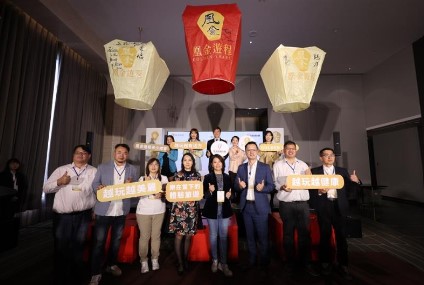
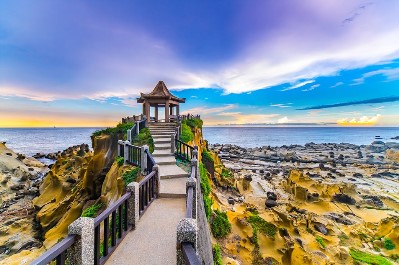
The Pacific Asia Travel Association (PATA) 2023 Gold Awards were announced on August 24, 2023. The North Coast and Guanyinshan National Scenic Area Management Office of the Tourism Bureau, Ministry of Transportation and Communications won the Gold Award for the "Alabao Bay Secret Land Reappearance Plan.” Alabao Bay is in the Heping Island Geopark. The award category was "Tourism Destination Resilience (Asia Pacific)." This award recognizes and encourages the development of sustainable tourism.
The secret land of Alabao Bay on Heping Island is known as having "the most beautiful sunrise in the world." The park is rich in natural resources, unique topography, culture, history, and biological diversity. The North Coast and Guanyinshan National Scenic Area Management Office worked with local teams to operate and manage the bay area under the concept of sustainable tourism. The bay is only open to tourists from May to September. Itineraries emphasize education and understanding through seminars and the training of knowledgeable residents who serve as tour guides. This allows tourists to experience the beauty of Alabao Bay and the community to share in the benefits of tourism at this site. Together, they can continue building Heping Island into an "International Sustainable Tourism Island.
The Tourism Bureau is committed to optimizing the tourism environment, including ensuring a healthy balance between tourism and the local ecology. Environmental education is prioritized in order to provide local and overseas tourists with a better understanding of our land and its history. By cooperating with local enterprises, the bureau works to improve the quality of tourism. The bureau also participates in an array of international organizations to build communication bridges. One part of this is to support efforts that shine an international spotlight on Taiwan’s achievements and efforts in tourism development.
The 2023 PATA Gold Awards consist of two main categories: “Marketing” and "Sustainability and Social Responsibility." Each category contains “themes” for which awards are also granted. The Marketing category has 14 themes and the “Sustainability and Social Responsibility” has 11 themes (including initiatives in the area of climate change). A “Grand Title Winner” is awarded for each of the two main categories, and 25 individual awards are granted for the specific themes.
2023 PATA Gold Awards Press Release
In order to encourage tourists to take public transportation, the "Taiwan Tourist Shuttle" has opened 18 new routes this year to create a total of 69 routes across Taiwan. In addition, service frequency has been increased by more than 1,400 service trips per month.
In order to revitalize the international travel market after the pandemic and improve convenience for independent travelers after border reopening, the government is promoting the Taiwan Tourist Shuttle and enhancing services, including half-price ride discounts, increased frequency, new travel routes and four additional measures, including integrating tourist attraction signage into local characteristics. The Half-price Ride Discount campaign began on May 20, 2023. Passengers can use electronic tickets (including mobile payments) to take advantage of half-price fares on preferential routes. By the end of July, more than 830,000 people took advantage of this program, and the numbers continue to increase. In addition, under the “new tour route” campaign, new tourist attraction routes have been added, including the "Sun Moon Lake-Alishan Line" proposed by the Sun Moon Lake National Scenic Area Management Office. This route connects Sun Moon Lake and Alishan, two of the most popular domestic tourist attractions with international tourists. In Kinmen, the "Western Border Line" route proposed by the county government is operated using large cruise-style buses. It connects famous and less well-known Kinmen tourist attractions via the newly-opened Golden Gate Bridge. This route allows tourists to experience the history and cultural development of Kinmen in depth. Each route has its own unique characteristics and awaits exploration by tourists.
